Yucatan Photographer
Merida is a city with many visual extremes. At times it is fast-moving and busy like any metropolitan city; at other times the streets are so empty and things grind to such a halt that you might think nobody lives here. The spectrum of colors and tones is wide and often high in contrast, much like the city’s contrast of modern and old. Colors permeate so much that you can almost smell them. While color photography seems to be the obvious choice here, black and white images can be equally rewarding. In addition, the Yucatan Peninsula is almost completely flat, giving a photographer a nice full day, with the sun, your most important light source, at almost 180 different angles.
Exploring a city with a camera in hand should be taken as an adventure. I tend to prefer images that include human subjects. While looking for candid and real documentary images, sometimes I have to imagine that I am a spy. My subjects can’t know that I am photographing them, or at least when they find out, it should be too late. This is not easy to pull off, since gringos stick out in a crowd here, but Merida’s population is accustomed to an influx of foreigners, so there are ways to achieve great results.
To blend into city life, I don’t wear short shorts and the typical tourist Hawaiian-style tropical flower shirts. On a normal day when I go out to shoot around town, I carry my camera over my shoulder and maybe have an extra memory card in my pocket. Cameras draw attention; so if you have a relatively big SLR, and don’t want all eyes on you, practice hiding it using your body. Pay attention to angles of sight, turning your body one way or the other as you maneuver through crowds, using yourself as a visual shield for your equipment. If your subject notices you but doesn’t get attracted by anything about you in particular, they will usually look away. It’s not polite to stare you know! When they look away, that’s your opportunity to raise your camera, snap a shot or two, and then lower it again to your side.
Every step I take, I encounter new ground, new surroundings and new people. Sometimes, stopping in one place and letting it all go by allows me to get more comfortable. I pick a corner or doorway where I can perch myself and look for a good scene, nice background, something to work with compositionally, and wait. With my camera visible to anyone passing by, I let the actors step into my frame. When you adopt the role of “tourist taking pictures of some building,” people tend to ignore you. The unspoken rule is, “I am taking pictures here, and you are choosing to walk in front of me.” Nevertheless, I prefer when they don’t notice me at all, so a good spot is one that has plenty of foot traffic, but where I am not directly in the flow.
Locations
The Gran Plaza: In Merida’s main square, also known as the Zocalo, inhabitants of the city pass frequently for a stroll through the promenade. Here you can find a full range of Meridano life. I suggest finding a nice spot to plant yourself and wait to see what passes in front of your lens. On Sundays, vendors set up stands throughout the square and the streets surrounding it are closed to vehicular traffic, making this an even more attractive venue.
Paseo de Montejo: This wide avenue is the pride of Merida. It is lined with old mansions, some well kept, and some looking like only ghosts live there. Modern architecture has moved in as well. New, multi-story buildings have sprouted up with large glass facades, literally reflecting old and new, and there is an abundance of trees everywhere. The sidewalks display sculpture exhibits that make for interesting elements. Take your time with this long stroll, as there are so many details for a hungry camera to digest.
Downtown Mercado: The area around the market is probably the most hectic and bustling part of Merida. Most of the buses to the suburbs come and leave from here. If you are going to shoot here, you will need to use a fast shutter speed and be quick on the focus (or auto focus, wink, wink). Things pass by fast, and the sidewalks are sometimes too congested to stop and properly frame your shot. The mix of classes and styles there is beautiful.
Neighborhood Parks: Every neighborhood in Merida has a small central plaza with benches, trees and a church. These are great places to take a rest in the shade, relax a little and of course, take some pictures! Locals of all ages can be found here: kids hanging out, couples close together and older folks reading newspapers and napping. The old churches are beautiful and are distinct in each neighborhood.
Outskirts: Merida was once a city surrounded by walls. You know you are passing out of the historic city limits when you encounter a gigantic arch. One of my favorite such areas is called “La Mejorada”. Here you can find blocks and blocks of neighborhood houses contrasting between clean and modern to run down and dirty, and from stone and metal to wood “scrap” houses. Sometimes the contrasts are slapped right next to each other.
Pueblos: The real rural life of the majority of the Yucatan can be found in remote villages. This is probably the trickiest of places to take candid photos of people, since you will usually draw more attention than you want. Most people are friendly but you’ll need to be especially considerate. You’re not in the big city anymore.
Cenotes: Beautiful scenes can be found inside these caves with light pouring in from a hole in the roof, illuminating the water below. Unfortunately it is almost never enough light to take a good shot without the use of a tripod. Flash may help, but can ruin the natural lighting that enters the cave. If your flash is not especially powerful, don’t even bother. Try a high ASA/ISO setting instead.
Beaches: Progreso is a port city on the north coast where the beach itself is not so beautiful, but the populated area offers alternative images to the typical tourist landscape. A bit of a Jersey shore rundown feel, only Mexican. Telchac Puerto and other beaches along the north coast offer more eye candy in terms of nostalgic beach landscapes. Keep your eye out for the many houses still in ruins from hurricane seasons of years past.
Equipment
Everyone has their preference for how much equipment they are willing to haul around with them. One deciding factor for me has been the climate. The difference between a small camera bag with a few pockets, and a backpack full of equipment can mean the difference between being comfortably warm or sweating so much that your camera can slip right out of your hands.
Since Merida is a modern city, digital or film cameras are both perfectly practical choices here. If you are shooting digital and don’t mind bringing a laptop with you, that would be an obvious solution to dumping your memory cards frequently. The city is relatively easy and fast to get around in, so you can easily come back to your home base (hotel, house, apartment, etc) to unload your photos without having to carry your laptop with you.
The same goes for trips outside of the city. Most locations are not going to be more than a couple of hours of traveling time away. If you don’t want the burden of a laptop, you can fare just fine using Internet cafes wherever you go. They are in abundance and you can burn your photos to CDs or DVDs there. Just remember to bring a memory card reader, even though some cafes also provide them. If you are shooting film, there are plenty of places to buy and develop rolls at an economic cost. The quality of the film is up to par, but most camera stores here do not have a wide selection of film types.
A wide angle lens can be your best friend. Wide angle lenses come in handy when you are in the tight confines of the downtown area, or standing in front of a gigantic pyramid that just doesn’t fit into your frame, no matter how far you back up. A zoom/telephoto lens is useful for special interest subjects, particularly in the nature reserves where you can’t get up close and personal with the flamingos and other wildlife.
A tripod is not necessary for the most part, but I recommend bringing one that is light. If your photographic foray will be a lengthy one, a tripod is definitely worth the hassle. The late afternoon light is very impressive, the colors of everything shift, and you’ll be wishing you had a three-legged friend to give you the stability to close down your f-stop and lengthen your exposures.
Definitely bring a lens cloth and some lens cleaning fluid. A lack of rain mixed with some wind can kick the dust up when you least expect it. A lens hood is another necessity. It can be impossible to find a shady spot in the blazing Yucatan sun. A lens hood prevents the sunlight from directly entering your lens, which causes anomalies of light refraction. A lens hood has saved at least 50 percent of my photos from unwanted cheezy effects.
Another option that won’t weigh you down and can be very useful is a polarizing filter. It will help you get more tonality in your skies. The light here is very strong, and often there are no clouds, leaving a sort of “blah” sensation in a photo that could have been stunning.
Other Considerations
Extra batteries, memory cards and other technological tidbits are available in many stores here, but are considerably more expensive than in the U.S. Try to buy those things on your next stateside vacation.
The Yucatan is humid. Zip lock bags are great for film and small pieces of equipment. Plastic bags have saved me many times from a sudden rain shower, which are frequent here.
If you are going to the beach, remember that sand and salt water can do irreparable damage to your camera and lenses.
Keep in mind that many of the Maya archaeological sites do not allow tripods without a special permit, or they may charge an additional entrance fee. Also keep in mind that the use of company logos with images from most of these sites is illegal.
Always bring a bottle of water with you when you leave the city. Dehydration hits faster than you realize. A nice brimmed hat saves the day by providing some personal shade (and looks pretty snappy, too!)
The city is considered safe in most areas, and you don’t need to be overly cautious or suspicious of being mugged, but always use common sense. At the very least, don’t leave your equipment lying around unattended even for short periods of time.
This may sound contradictory to my sneaky style, but I would rather miss a photo opportunity than offend someone or cause a confrontation, at least when I am the extranjero (foreigner). Like most people, Yucatecos can be very sensitive to having their picture taken. It is better to ask permission from someone if you are going to directly include them in your frame. I personally haven’t experienced any negative reaction from just snapping a shot of someone quickly on the street, but it should be done with care if you are not going to bother asking them. Be especially considerate in places outside of the city, like the colonial towns and Mayan pueblos. As interested and fascinated by another culture as you may be, it shows a lack of respect to treat people like they are animals in a zoo. In any culture, smiling and being friendly always helps to warm up your subjects. Sometimes, to get a great photo, all you need to do is ask!
Marko Jokic is a photographer and media specialist. He taught photography at ESAY (Escuela Superior de Artes de Yucatán) before moving back to New York City and has his own website, www.calmyoureyes.com.
>




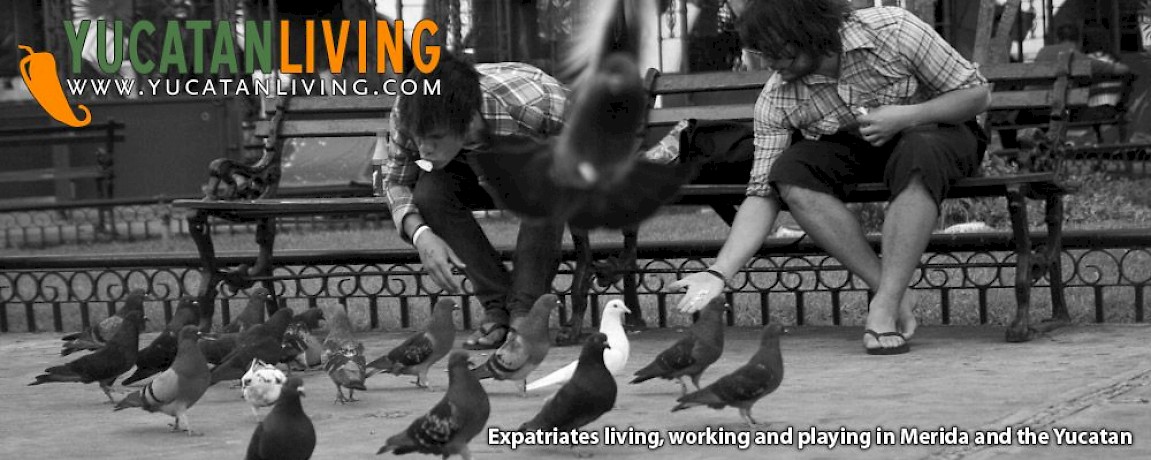


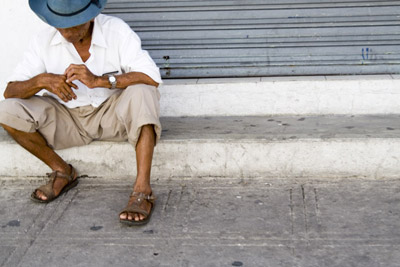
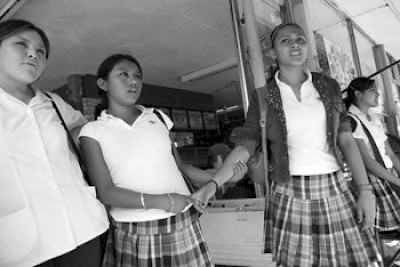
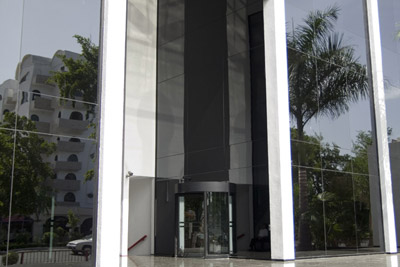
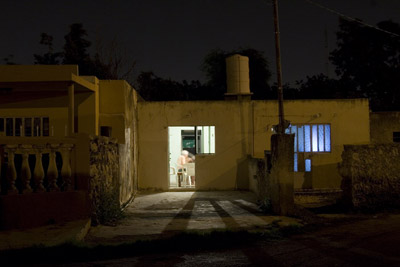
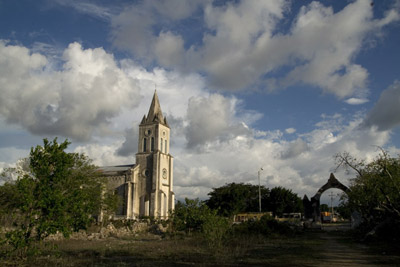
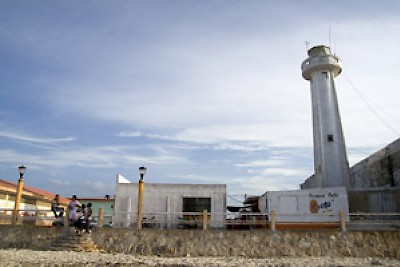

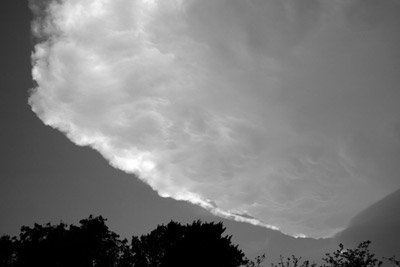
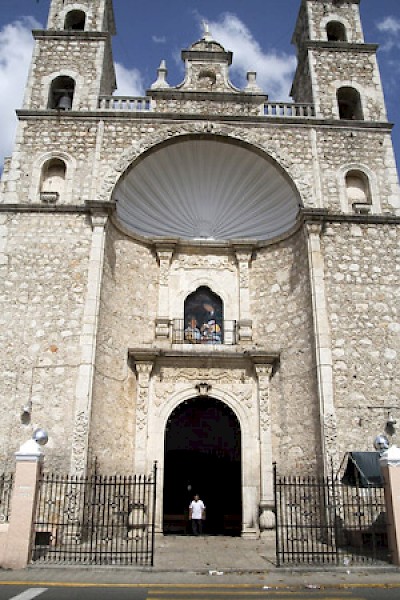
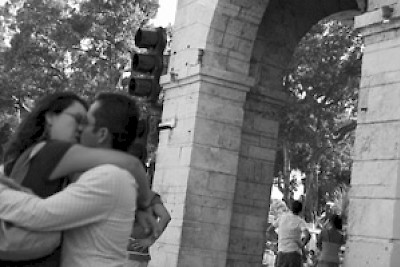

Comments
stormy 17 years ago
When I need to take picture of a person by themselves, I ask and offer a little money. For example: a man with firewood on his head or a lady at a loom, these people are working for money and a 10 peso coin helps their day. They have something of value to me and it's only right to pay them for it.
Reply
Vanessa Varguez 18 years ago
my friend went to Izamal, I think or one of the small towns outside Merida and she had a hard time taking pictures of the people who live there. The mayans belive that by taking their picture you can "steal" their soul. well, that's what at least they told my friend.
Reply
Kim G. 18 years ago
As an enthusiastic photographer, I can chip in a couple cent's worth on taking good photos. Getting a good camera is good advice. Just having a better lens will provide richer, nicer colors, and that by itself will make your photos look more professional. Second, use a polarizing filter whenever possible. Not only does this make the sky a darker blue (and enhance contrast with clouds), but it also makes colors appear richer and purer. Third, most professional photographers shoot within a half hour or so of the sunrise or sunset. Midday sun is usually flat, harsh, and unflattering. As a photographer, light is really all you have to work with, and the beginning and end of the day have the most interesting light. Finally, learn how to use photoshop. It extends the range of what you can do immeasurably. But it's no substitute for taking a good picture in the first place.
MJ, thanks for your article. I can hardly wait to see your website.
Regards,
Kim G.
Boston, MA
Reply
CasiYucateco 18 years ago
When I was a kid, I used to develop my own B&W 35mm film at home. In H.S. I'd take pictures of small town basketball games and other sports events, then sell them to two or three little towns' weekly newspapers the next day for 25 cents a picture. Wow, does that take me back. Of course, a quarter bought something then - a gallon of gas! - so I easily made a little spending money. And for every picture I sold, I probably had taken two or three dozen.
I think my biggest frustration on visits to Merida is just not understanding the "local light." Tropical light is harsh at times. And the sky frequently comes out a whitewash (going to try some filters) instead of bright blue.
I'm going to work with it more ... and yes, upgrade to a more decent camera soon. Probably one of the most important things is just having time to go to the right place at the right time of day. I find myself wanting to photograph something 'cool', but the sun's not right (or it is raining or something else).
Anyway, I love pictures. I love the big new pictures on YL. And I really enjoy seeing other photographers' work. So this was an extra nice article for me.
Reply
Working Gringos 18 years ago
Casiyucateco: it really helps to use a Single Lens Reflex (SLR) digital camera because the better lenses and larger sensors will capture more detail. Like Marko, we use Canon cameras and lenses too, specifically the 1Ds and D60, but any SLR will out-perform a palm-sized, snap-shot digital camera, no matter how many megapixels it has. Knowing how to get the most out of Photoshop is also a big plus. In the darkrooms of our youth, we could manipulate saturation, tone and contrast, and we could dodge and burn areas of an image to adjust for details in the shadows and highlights. In the Photoshop "darkroom" of today, that's just the beginning.
Of course the real secret that no pro photographer will admit is to take a lot more photos than any amateur would ever think to take and then delete all but the best ones before showing them to anyone. ;)
Reply
Luchia 18 years ago
We plan to visit Merida at the end of the year and hopefully make it our home in a couple of years. Your article is very informative and would certainly help me in bringing back beautiful pictures. Thank you very much
Reply
MJ 18 years ago
CasiYucateco: I use a canon digital rebel XT. Aside of paying close attention to exposures, shooting in "RAW" format allows for more control of images when I adjust them in photoshop, hence the strong light can be tamed up to a certain point. Aside of that, you can also try framing your pictures so that shaded areas and sunblasted areas are not in your shot at the same time.
Thanks for your comments and visit to my website!
As for the Gringos, I can not divulge their technological secrets. I signed a waiver form the first time I entered "the cave".
Reply
CasiYucateco 18 years ago
Thank you for all the tips = particularly those about inter-personal relations when taking photos. I was wondering if the author Marko Jokic and the working gringos would share with us more information about what particular digital camaras they use. The range of Marko's and Gringo's photos is quite wonderful, with shadow detail and highlight detail.
Since the tropical light is often quite strong, how is detail preserved? I'm pretty sure they have much better cameras than me. If I ever take a step to move up, I'd like to know what these admired photographers use. I am often "wowed" by the pics on Yucatan Living. One of the things I know I need to work on is my composition. I see great examples all the time here and I really enjoyed the link to Marko Jokic's website too! Thanks.
Reply
Albert 18 years ago
I love Merida. I hope one day I will have the opportunity in retiring and seeing more of the Yucatan Penisula.
Reply
Marie 18 years ago
Beautiful article, great tips!
Reply
(0 to 10 comments)